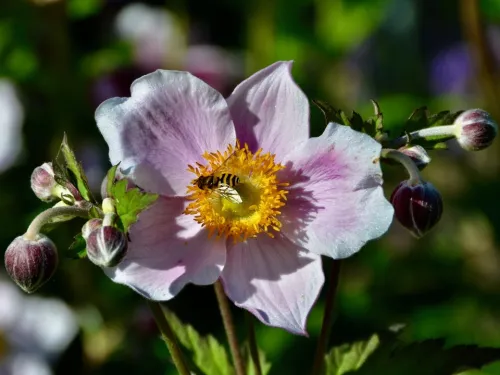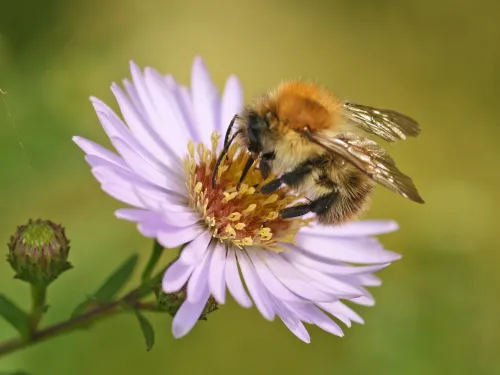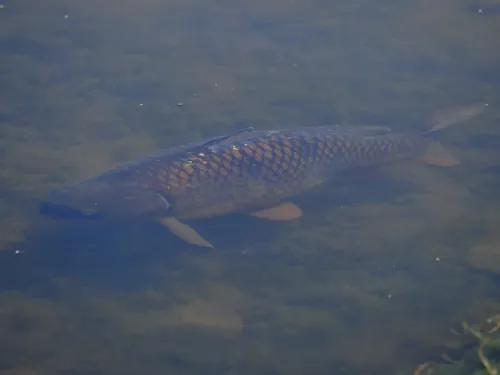
Common banded hoverfly
The Common banded hoverfly has a fitting name: it is not only one of our most common species, its black body is also covered in yellow bands! It can be seen in many habitats from gardens to woodlands.
Want to learn more about wildlife near you? You're in the right place, search below and discover the nature you can help protect in Kent.

The Common banded hoverfly has a fitting name: it is not only one of our most common species, its black body is also covered in yellow bands! It can be seen in many habitats from gardens to woodlands.
An iconic tree, particularly in the south of the UK, the Common beech stands tall and proud in woodlands and parks. It turns beautiful golden-brown in autumn, strewing the floor with its 'mast' (nuts).
Common bird's-foot-trefoil has a vareity of names that conjure up some interesting images: 'Eggs and Bacon', for instance! Its small, yellow, slipper-like flowers can be seen in all kinds of grassy places.
Look for the delicate, pink flowers of Common bistort in wet meadows, pastures and roadside verges. It is also known as 'Pudding Dock' in North England because it was used to make a dessert at Eastertime.

The common blue butterfly lives up to its name - it's bright blue and found in all kinds of sunny, grassy habitats throughout the UK! Look out for it in your garden, too.

Living up to its name the Common blue damselfly is both very common and very blue. It regularly visits gardens - try digging a wildlife-friendly pond to attract damselflies and dragonflies.
Common box grows in woodlands and scrub in southern England, with notable populations in the Chilterns, Cotswolds and North Downs. A familiar evergreen tree, it has shiny, dark green, oval leaves.
This large brittlestar can be found in rockpools around much of the UK, but be gentle - its arms are very brittle and will break off if disturbed.
The carnivorous lifestyle of common butterwort makes this heathland plant a fascinating species. Its leaves excrete a sticky fluid that tempts unsuspecting insects to land and become its prey.

The common carder bee is a fluffy, gingery bumble bee that can often be found in gardens and woods, and on farmland and heaths. It is a social bee, nesting in cavities, old birds' nests and mossy lawns.

The common carp is a very large fish that is popular with anglers due to its size and fighting spirit. It frequents ponds, gravel pits and lakes, but is not native to the UK, being introduced in the Middle Ages.
A low-growing plant of sand dunes, heaths and grassy places, Common centaury is in bloom over summer. Look for clusters of pretty, pink, five-petalled flowers.